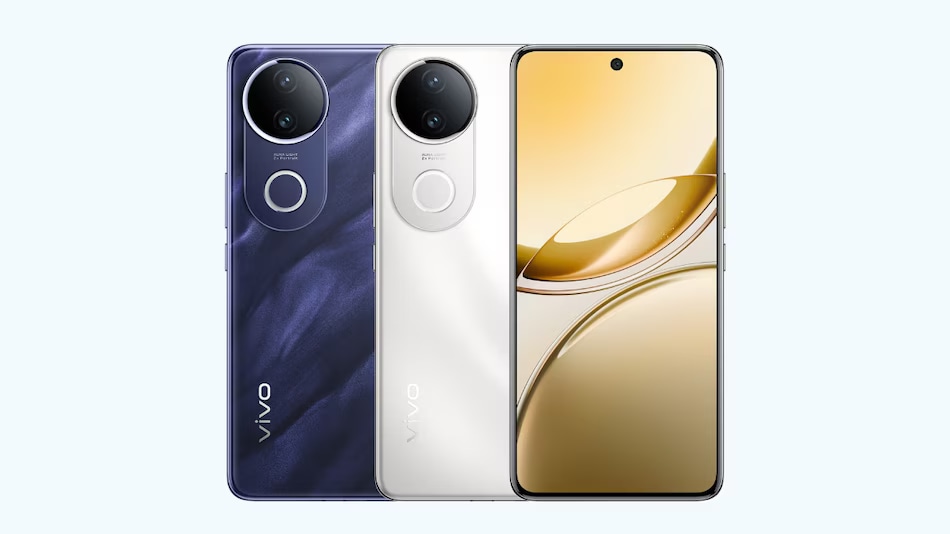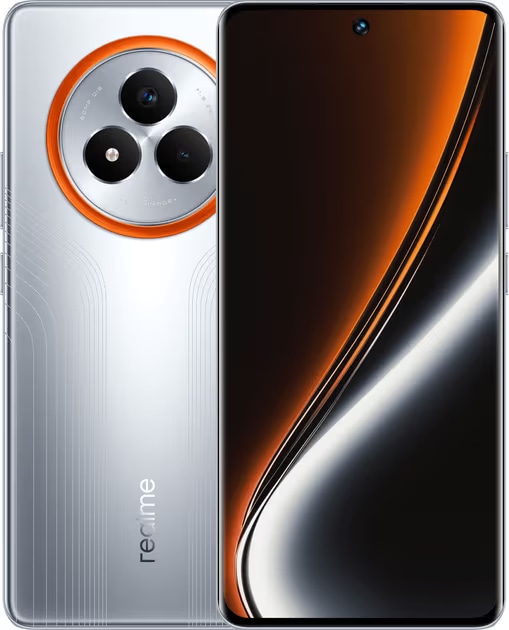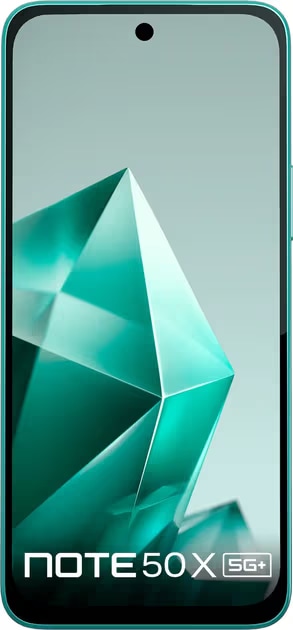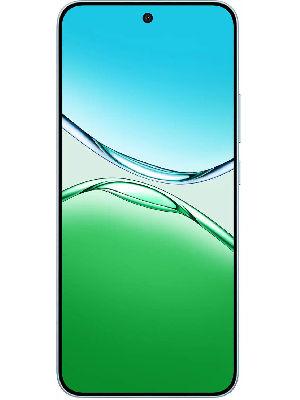A shade of OLO, e-waste wisdom, and Airtel’s silent recalibration
For years, we were told by tech companies that the traditional hard disk drive (HDDs) were slow and therefore obsolete.
Let us begin our conversation with week with something thought-provoking (and also not as intense as AI, new smartphones and broadband bills; more on that later). Scientists, from the University of California Berkeley, University of Washington School of Medicine, and Herbert Wertheim School of Optometry & Vision Science claim to have discovered a new colour - OLO. A sophisticated technique involving lasers to stimulate specific cells in the human retina led to them seeing something that’s, simply put, a highly saturated blue-green hue. One could of course argue whether this is a new colour or not (that’s a nuanced argument, for anyone willing). Your world will unlikely change much with the discovery of a colour that cannot be seen without laser stimulation, but there’s a bigger question that may be at play here — can this become a step towards understanding colour blindness, and indeed solving unfortunate vision shortcomings, often because of macular degeneration?

RULES OF ENGAGEMENT

I always thought politeness was a basic tenet. Thank you. Please. Sorry (this word comes hardest to folks). But in the world of AI, apparently saying these words to an AI model, costs money. In response to someone musing how much politeness in general would have cost OpenAI in terms of electricity bills, CEO Sam Altman’s tongue-in-cheek reply still does enough to put things in perspective. “Tens of millions of dollars well spent--you never know,” he wrote.
But it takes me back to what Kurtis Beavers, a director on the design team for Microsoft Copilot, once said. “Using polite language sets a tone for the response,” he says. LLMs, or large language models (the very basis for generative AI) are trained on human conversations and use the tonality as a cue. Has your messenger or email app ever prompted you with the next word suggestion? That also takes cues from your tone and sentence structure till then. LLMs pick make similar assumptions and picks based on your input. When it notices politeness, it’s more likely to be polite in return.
This is a conflicting time for my daughter and myself, but unlikely we'll change — we take pride in being polite with AI (and humans, let there be little doubt). We’ll not take a risk. What if one day, the machines do take over?
WASTE VS. WISDOM
For years, we were told by tech companies that the traditional hard disk drive (HDDs) were slow and therefore obsolete. The SSDs, or solid-state drives are the future (and have been, for almost a decade now) because they’re faster, more power efficient and have a much smaller footprint. Turns out, the physical footprint is in stark contrast to the environmental one. Seagate Technologies, one of the storage tech giants, in their latest ‘The Decarbonizing Data Report’ seems to be suggesting that we should return to using HDDs more than SSDs.
- SSDs have the highest embodied carbon (rated at 4,915 Kg CO2), both in total and per TB, making it the most carbon-intensive option, with the HDD registering just 29.7 Kg CO2. “Hard drives exhibit the least carbon footprint, both in total and on a per-TB basis, offering the most carbon-efficient sustainable storage solution,” says the report. That is, less than 1 Embodied Carbon per TB, compared to 160 for an equivalent SSD.
- This takes me to the thought of millions of Windows 10 PCs that will likely become obsolete later this year. Microsoft ends support for Windows 10 operating system in the middle of October, post which, many PCs that are incompatible with a Windows 11 upgrade, will end up in landfills. Most of these would be enterprise systems, and equally, quite a few personal systems too. Many of these will have SSDs. That is a significant volume of e-waste that we are potentially generating within a few months. Are we at all prepared?
WHAT’S ON MY MIND?

At some point in the past few days, Airtel and Blinkit had announced that the former would leverage the latter’s quick-commerce platform to deliver SIM cards to buyers, in that ballpark guarantee of 10-minute deliveries. Why I mention this now is, just yesterday, happened to order a few groceries from Blinkit (delivered within 12 minutes, with some ‘surge’ pricing, of course) — but an interesting thing was part of the package. In the carry bag, an interesting add-on. A SIM ejector pin, with unmissable Airtel and Blinkit branding. Suddenly you start contemplating your postpaid and prepaid subscription costs, a cursory glance at Airtel’s website to see the tariff plans (the Airtel Black plans make a lot of sense for most families), and before you know it, a new connection or a port request is in consideration. That is the power of smart branding, and quick-commerce.
These SIM cards, being delivered using Blinkit’s infrastructure, reduces investments and expenditure for Airtel’s own SIM delivery network. These SIMs can be set up as a new prepaid account, new postpaid account, or as a port-in from another network. With an online portal for KYC, or know-your-customer requirements, this also means you’d not have to visit a nearby Airtel store for the same (lesser traction at an Airtel store doesn’t harm the brand).
If you have used Reliance Jio’s iActivate service (as I have), you’ll realise Airtel’s process here doesn’t yet support eSIMs — the key here is, a physical SIM delivered by Blinkit → set up with KYC and choosing prepaid, postpaid or port-in → once active, use Airtel Thanks app to convert connection to eSIM. In Jio’s case, you can start with an eSIM from the off, and the QR is delivered to the registered email address, within a few minutes (or hours, depending on your luck that day) or hours following the KYC completion.
Should Vi or Jio also join the party?
RECALIBRATION

It has been many, many years since India’s broadband space saw tariff wars. We may be in for one. Or this could simply be a worrying sign, that your broadband bills are about to get a little more expensive. I raise the alarm because I’ve regularly checked broadband tariffs, expecting changes at some point (it has been a long wait, admittedly). Is Airtel is getting rid of 200Mbps Xstream Fiber plans?
- Two parts to this story. The standalone Xstream Fiber plans now list four 100Mbps subscription options — ₹799 for just broadband and ₹999 (that is broadband + OTT streaming bundle including Netflix, Amazon Prime and JioHotstar). The erstwhile offering at ₹999 used to be a standalone 200Mbps Xstream Fiber plan, which seems to no longer be around.
- The Airtel Black plans in many circles (I checked multiple, including Delhi, Mumbai and Hyderabad), which now pegs a 100Mbps plan at ₹899 (that is broadband + digital TV channels worth ₹350 + OTT streaming bundle) and another at ₹1199 (100Mbps broadband + digital TV channels worth ₹350 + OTT streaming bundle including Netflix and Amazon Prime). From the listed Black plans as well, any 200Mbps option is now missing.
For many homes, 100Mbps may be a tad on the lower side in terms of required speeds, considering we have so many phones, tablets, computing devices and smart TVs all scrambling for the same bandwidth. At the same time, a 300Mbps Xstream Fiber broadband line as part of the Airtel Black plan (there seems to be no standalone listed at this time) for ₹1,599 per month, may be an overkill. In my book, 200Mbps was the perfect balance for most home usage scenarios.
Off late, Reliance Jio Fiber has also eliminated its 150Mbps plans, and have a similar structure of 100Mbps and 300Mbps plans. While Jio Fiber also has 500Mbps as an option, Airtel’s Xstream offerings don’t have that balance between 300Mbps and 1Gbps. If at all that is an option (availability is often a question), Tata Play Broadband and ACT broadband may just provide that flexibility that Airtel Xstream doesn’t anymore.
There could still be some realignment in the coming days, but it seems in an urge to bundle OTT streaming subscriptions and digital TV (it could be a choice between DTH and IPTV), Airtel has taken away a crucial part of their Xstream Fiber subscriptions. Simplicity of plans.









 8 GB RAM
8 GB RAM




